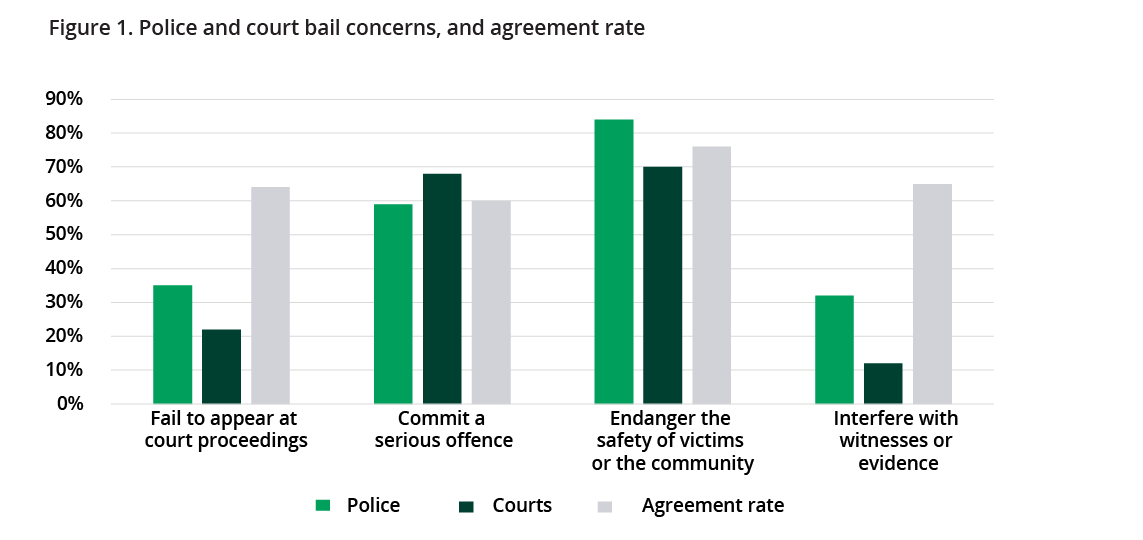Automatic language translation
Our website uses an automatic service to translate our content into different languages. These translations should be used as a guide only. See our Accessibility page for further information.
View presentation by Amy Pisani
Link to YouTube video
In NSW, the Bail Act 2013 (NSW) provides legislative guidance for bail authorities to decide whether an accused person remains in the community until their matter is heard in court or whether they are detained. A police custody manager makes the initial bail decision soon after a person has been charged with an offence. If police refuse bail, the accused is held in police custody, typically for a period of 24 hours or less, until they can be brought before a local court magistrate. The magistrate then makes their own bail decision, either granting bail or continuing to remand the defendant in custody.
Despite the NSW Bail Act’s structured framework, prior research suggests there is substantial variation in bail decisions made by police and courts in NSW, with magistrates granting bail to more than half of the defendants initially refused bail by police.
This study set out to determine which factors are influential in adult first court bail decisions in NSW Local Courts, and the reasons why courts release adult defendants who have already been refused bail by police. We observed 252 adult first court bail hearings in the NSW Local Court between February and May 2023. These observations were then linked with police bail and reoffending data. We also conducted interviews with 40 criminal justice stakeholders involved in adult bail hearings. We descriptively and thematically analysed these datasets.
Of the 252 defendants whose bail hearings we observed after they were refused bail by police, 44% were released on bail by the court (n=110), and 12% had their matter finalised at first appearance or their bail dispensed with (n=32). Only 44% of defendants were bail refused by the court (n=110).
Figure 1 shows that there was general agreement between police and the courts regarding bail concerns, with both parties most frequently identifying reoffending and endangering the safety of victims/community, as their primary concerns.
Two main differences between court and police decisions emerged from the analysis:
(1) magistrates are more often satisfied that suitable bail conditions can be put in place to mitigate any risks identified; and (2) police rarely grant bail to people charged with show cause offences. Stakeholders reported that differences in bail decisions occur because police prioritise community and victim safety, have limited access to information from defendants and legal representatives, and do not apply discretion when applying the show cause requirement.

Legal factors, such as criminal history and seriousness of offences, are the most influential factors in both police and court bail decisions. However, magistrates are more able to thoroughly assess show cause requirements and the suitability of bail conditions at the first court bail hearing, while police are more risk averse.
Last updated: